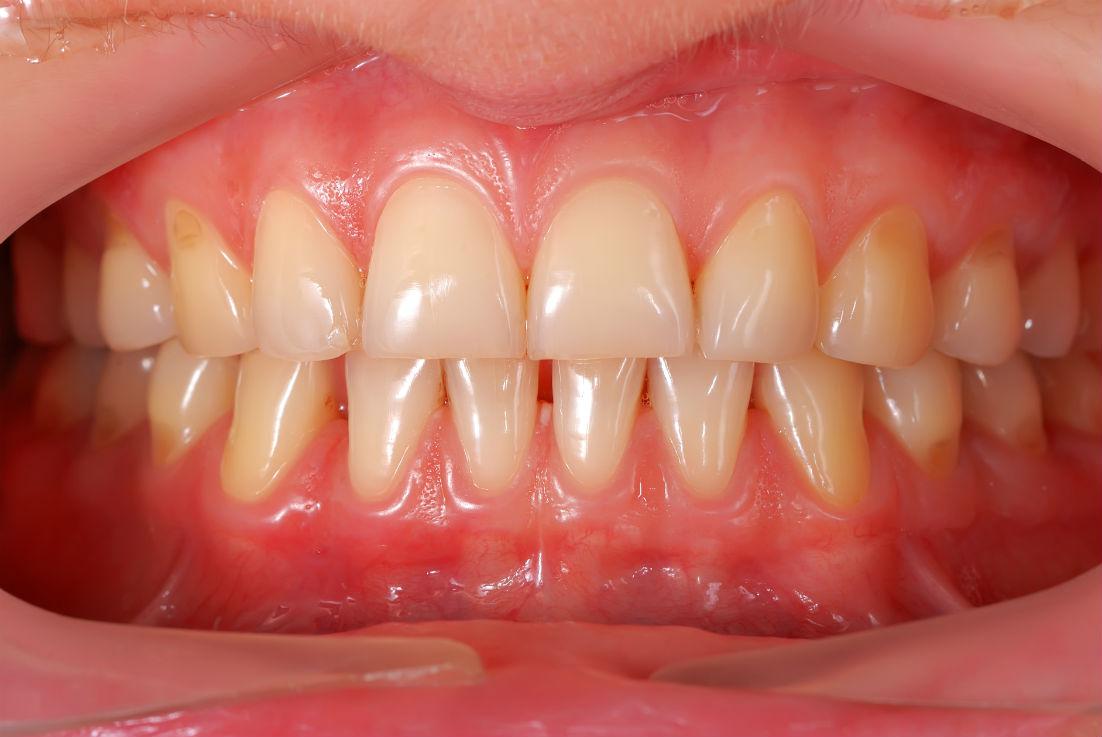 Let’s see those pearly whites! You hear it all the time, but when was the last time someone wanted to see your healthy pink gums? Though they may be destined to play second fiddle to their white, show-stealing counterparts, gums are really the unsung hero of your mouth. Gingiva (i.e., gums) is the tissue that surrounds and protects teeth, along with the underlying bone. Gums attach to the teeth, forming a seal that protects the underlying bone and provides a barrier against infection.
Let’s see those pearly whites! You hear it all the time, but when was the last time someone wanted to see your healthy pink gums? Though they may be destined to play second fiddle to their white, show-stealing counterparts, gums are really the unsung hero of your mouth. Gingiva (i.e., gums) is the tissue that surrounds and protects teeth, along with the underlying bone. Gums attach to the teeth, forming a seal that protects the underlying bone and provides a barrier against infection.
Like most unsung heroes, gums usually aren’t given much thought until an issue arises. Unfortunately, for many of us that time has come. According to a study by the Centers for Disease Control and Prevention (CDC), almost half of Americans aged 30 or older have periodontitis (the advanced form of periodontal disease).
What is gum disease?
Gum disease starts when plaque, a sticky, bacteria-filled film, builds up under and along the gum line. Plaque can cause infections that lead to gum disease and tooth decay, including gingivitis, the earliest stage of gum disease. The bad news is that even at this early stage gingivitis causes your gums to become inflamed, tender, and prone to bleeding. The good news is that since the bone and tissue holding the teeth in place aren’t impacted, the damage is reversible. However, if left untreated, gingivitis can turn into periodontitis. Unlike gingivitis, periodontitis impacts the bones that hold your teeth in place. Without treatment, periodontitis can ruin the gums, bones, and tissues connected to your teeth.
Treatment
Not all gum disease requires surgical treatment. In fact, professional dental cleanings already include the removal of plaque and tartar (the primary cause of gum disease) from above and below the gum line. Another non-surgical form of treatment is scaling and root planing. This procedure is essentially a deep-cleaning completed under anesthesia, where hardened plaque and tartar are scraped away and any rough spots on the tooth root are smoothed to create a clean surface for the gums to reattach. The use of antibiotics may also be prescribed to control plaque and inflammation of gum tissue.
In some patients, non-surgical procedures are all that is needed; however, surgery is required when tissue around the teeth is unhealthy and cannot be repaired with non-surgical options. In these instances, providers may recommend flap or pocket reduction surgery. During this procedure, a patient’s gums are lifted back so tartar can be removed and damaged bone can be smoothed. This results in a reduction of space between the gum and tooth, limiting the areas where bacteria can hide.
Other surgical treatments include bone and soft tissue grafts. Bone grafts use fragments of your own bone, synthetic bone, or donated bone to replace and regrow bone in areas destroyed by periodontal disease. This procedure restores the secure attachment of a patient’s teeth to the bone. Soft tissue grafts use grafted tissue, most often taken from the roof of the mouth, to strengthen thin gums or fill in areas where gums have receded.
In cases where the bone has been destroyed, guided tissue regeneration may be a treatment option. Done in combination with flap surgery, a small piece of mesh-like fabric is inserted between the bone and gum tissue. This prevents the gum tissue from growing into the area where the bone should be and allows the bone and connective tissue to regrow to better support the teeth.
Do I need to worry about gum disease?
Even if you’re cavity-free with sterling, white teeth, you’re not immune to gum disease. Most people aren’t even aware that anything is wrong, since the early stages are usually painless.
While plaque is the primary cause of gum disease, other factors that can contribute to periodontal disease include:
- Hormonal changes such as those occurring during pregnancy, puberty, menopause, and menstruation, make gums more sensitive, which makes it easier for gingivitis to develop.
- Illnesses may also affect the condition of your gums. Recent studies have suggested a connection between periodontal disease and a number of other diseases, including heart disease, diabetes, and rheumatoid arthritis. Scientists believe that inflammation may be the basis for the link between these systemic diseases.
- Medications can also affect oral health because some lessen the flow of saliva, which has a protective effect on teeth and gums.
- Smoking makes it harder for gum tissue to repair itself.
- Family history of dental disease can also be a contributing factor in the development of gingivitis.
The good news is that gum disease is preventable and good oral hygiene habits play a big role. To help maintain healthy gums:
- Floss regularly
- Brush 2x a day
- Get regular dental cleanings
- Don’t smoke
- Use fluoride toothpaste
- Use a therapeutic mouthwash
You can also improve gum health by increasing your intake of the following foods:
- Onions are a great food for healthy gums because they neutralize oral bacteria. They have microbial properties that target the most common types of bacteria which cause gum disease and cavities.
- Leafy greens, like kale and spinach, are full of healthy vitamins and minerals. This includes Vitamin C, which boosts the production of red blood cells and reduces inflammation. Both of these strengthen your battle against irritation and gum disease.
- Celery, carrots, and apples (among other naturally crunchy foods) are excellent at scraping away stuck-on food and plaque. The hard pieces of these foods get in between teeth and into tooth crevices, which helps keep your mouth fresh between brushings. They also take longer to chew and generate more saliva, which helps to flush the mouth of bacteria near the gum line.
- Dairy products such as milk, yogurt and cheese, are also great for teeth because they contain a protein called casein, which helps neutralize oral acids produced by bacteria in the mouth.
It is important to remember that even if you have a family history of gum disease, you don’t have to be destined to experience the painful effects. Through good oral hygiene, regular dental check-ups, and increasing your intake of the foods noted above, you can maintain healthy gums. If you have questions about your gums, or are concerned about your oral health in general, please contact our practice.


